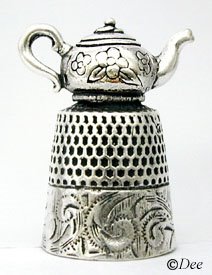Now THIS is recycling...
Considering the economy and desire to live more greenly, some of the following recycling ideas are interesting reading (to see the full text, visit http://victoriandecorating.blogspot.com/2007/02/victorian-home-perhaps-not-quite-what.html ).
The Victorians were great believers in waste not want not, they saved and reused everything. Sheets were expected to last 5 to 7 years, when they were worn down the center, you cut them in half and stitched the 2 outside edges together and used them some more. Later they would be used as dust covers, after that they would be torn up into strips for bandages or given to the poor. In Britain after 1875, refuse removalbecame an obligation of the city. Before that you had to handle it on your own. Anything paper could be burned in the kitchen stove, but clean paper was re-used. Some of it was cut up and used for toilet paper, which did not become commercially available till some time after the invention of the flush toilet. Paper was also recycled to make ‘spills’ which were long strips of twisted paper used to light fires.There were many street traders who went door to door buying used items.This was true in every major city and town. Paper was bought by paper mills and manufacturers of paper mache furniture and ornaments. Dealers bought iron, metal, wood, lead, and old bottles. Old textiles and bones were bought by the rag and bone man who sold these things to paper mills, glue, gelatin, match, toothpick and fertilizer manufacturers.Any kitchen waste that could not be re-used or burned in the stove was dumped into a bucket. A thrifty cook had very little to throw out. The contents of the bucket was called “wash”. A washman came regularly to buy it, it was then sold as “hog-wash”, or pig swill. There was a big demand for it. Many working people in London kept pigs in their back yard to make extra money. An unscrupulous cook could tell her employer that she needed money to pay the man to take the wash away, then collect from the wash man too.Fish heads were used to make soup, the water vegetables were cooked in was used to make gravy, as were plate scrapings and unfinished wine. Tea leaves were rinsed and scattered over carpets to help collect the dust when sweeping, then burned in the stove. Leftover tea was used to wash windows. In the US, cities had garbage removal. In Boston, during the 1870's there were 2 collections a week in winter and 3 a week in summer. New York City had regular trash collection by the mid 1800's. Trash was deposited in garbage boxes or ash barrels, and on windy days refuse would go flying down the streets.
Before refrigeration the best they could do in a city house was to use a cool cellar or a tiled room with a north facing wall. In the countryside you had the springhouse or a storage cellar of some kind. There were many ways to try to extend the shelf life of food. It was recommended that you check your meat regularly, and powder it with ginger or pepper against flies. Charcoal was also used to help keep it fresh and remove any bad odors. Scalded milk stayed drinkable for more hours than fresh. To keep it for several days you’d add grated horse radish to it. Eggs could be boiled and packed in sawdust and kept for 3 months.
Imagine doing all this yourself without any help, or even with the aid of a maid or daughter. That's one reason for the old tradition of Monday--washing ; Tuesday -- ironing ; Wednesday something else, can't recall offhand. There was a major job to be done every day but Sunday, because these jobs took up the whole day. It's why young girls took on so many wifely tasks at such an early age. In America, by the way, the term servant was not used much, except by the highest classes. Most referred to them as "hired help", it was more democratic.
The Victorian city dwelling woman was constantly fighting a battle against dust. This was not the kind of dust that we are used to. It was dried city mud, with particles of decaying animal and vegetable matter, horse droppings, etc. Coal dust and soot were everywhere, from the smoke pouring out of the chimneys to the coals as they were carried about the rooms from fireplace to fireplace, to the ashes that had to constantly be swept and gotten rid of. Soot was thrown out by the fires and blackened everything. People would cover surfaces and wash the covers regularly. However, over time the covers became more and more decorative and less and less washable. The covers now needed covers. Can you see where this is heading as far as Victorian decorating goes? It was advised that you should have 3 hairbrushes. One to start the day out with a clean brush, the second to be washed and set to dry for the following day, the third to lend to a friend if she needed it. A woman remarked that it was impossible to keep your hair clean “ our brushes look black after one using”. If your hair got that dirty in one day, with a hat on when you went outside, imagine how filthy your clothes and furniture would be.
Sunday, February 15, 2009
Subscribe to:
Post Comments (Atom)









No comments:
Post a Comment